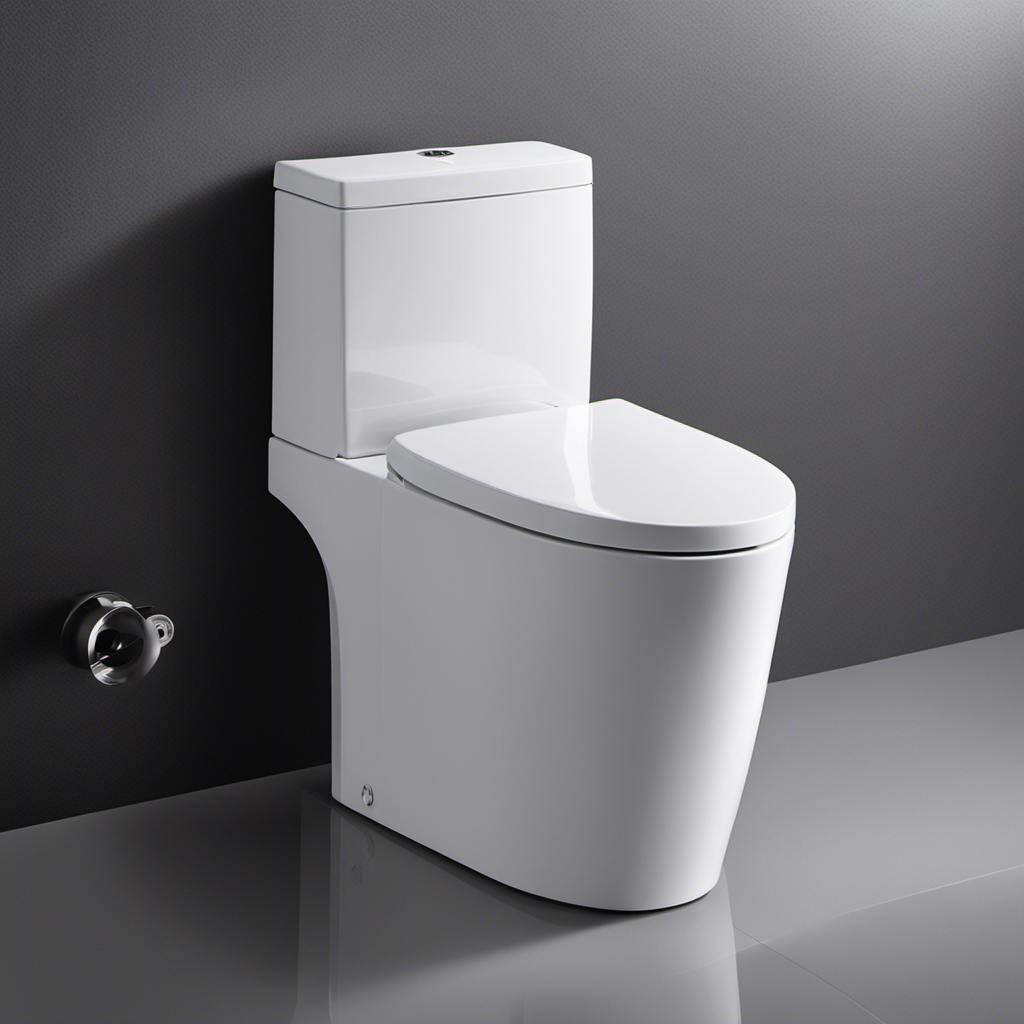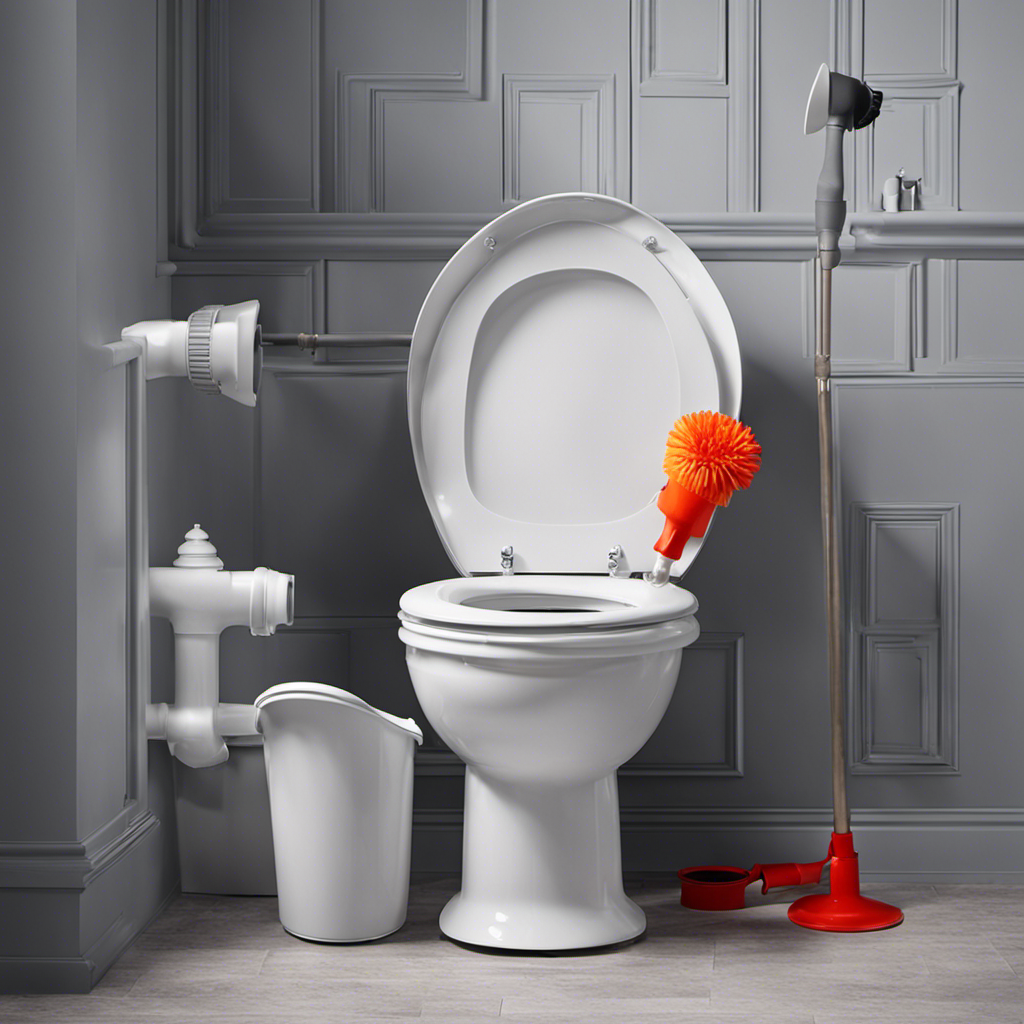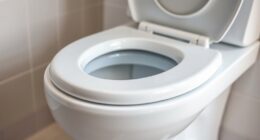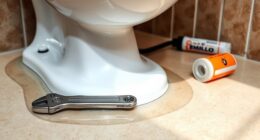Have you ever struggled with a clogged sink or toilet? Don’t worry, I’ve got you covered. In this article, I’ll share my expertise on choosing the right plunger for the job, specifically focusing on the importance of the flange.
Understanding the differences between types of plungers, like rubber and accordion, is key to successfully unclogging your drains. Whether it’s a sink or a toilet, I’ll provide you with step-by-step instructions to get the job done efficiently.
So, let’s dive in and tackle those stubborn clogs together!
Key Takeaways
- The flange is a rubber piece inside the cup of a toilet plunger that creates a powerful suction force.
- Sink plungers do not have flanges but can form a seal on a flat surface.
- It is recommended to have separate plungers for sinks and toilets to prevent mix-ups.
- Rubber plungers are generally more effective and less likely to cause damage compared to accordion plungers.
Types of Plungers: Understanding the Differences
I find it helpful to understand the differences between sink plungers and toilet plungers when choosing the right plunger for the job. Sink plungers do not have flanges, but they can form a seal on a flat surface. On the other hand, toilet plungers have flanges that prevent them from getting filled with toilet water.
Having separate plungers for sinks and toilets is recommended to prevent mix-ups. It’s also a good idea to keep multiple plungers in different colors to avoid accidental confusion.
Using a plunger has several benefits compared to other unclogging methods. It is a simple and effective tool that creates suction to dislodge clogs.
Proper plunger maintenance is important to ensure its effectiveness. Regular cleaning and inspection of the rubber cup will help maintain its suction power and prolong its lifespan.
The Importance of the Flange: Why It Matters in Plunger Selection
When selecting a plunger, it is important to consider the presence and functionality of the flange.
The flange is a vital component of a plunger as it creates a powerful suction force that helps to unclog sinks and toilets effectively.
To maintain the flange, it is essential to keep it clean and free from any debris or residue that may affect its performance.
Regularly inspect the flange for any signs of wear or damage, and replace it if necessary.
Troubleshooting common plunger issues may involve checking the flange for proper alignment and ensuring it forms a tight seal with the drain.
Rubber Vs. Accordion Plungers: Pros and Cons
Rubber and accordion plungers have different advantages and disadvantages for unclogging sinks and toilets.
Rubber plungers are known for their durability and effectiveness in clearing clogs. They create a tight seal around the drain, allowing for maximum suction and pressure. Rubber plungers are less likely to cause damage to the toilet bowl compared to accordion plungers.
On the other hand, accordion plungers may not be as effective as rubber plungers. The plastic material of accordion plungers doesn’t fit as snugly, leading to a weaker seal. Accordion plungers can also scratch the toilet bowl if used with excessive force.
When it comes to choosing a plunger for unclogging sinks and toilets, it is recommended to opt for a rubber plunger. Its durability and effectiveness make it the preferred choice for tackling stubborn clogs.
Sink or Toilet: Choosing the Right Plunger for the Job
For unclogging sinks or toilets, it’s important to select the appropriate plunger. When comparing the effectiveness of plungers for sinks and toilets, there are a few key differences to consider.
Sink plungers do not have flanges, but they can form a seal on a flat surface. On the other hand, toilet plungers have flanges that prevent them from getting filled with toilet water. It is recommended to have separate plungers for sinks and toilets to avoid mix-ups. Additionally, keeping multiple plungers in different colors can help prevent accidental mix-ups.
In terms of plunger maintenance, it is crucial to keep your plunger clean. After each use, rinse it thoroughly with hot water and disinfect it to prevent the spread of bacteria. Regularly inspect the rubber cup and flange for any signs of wear and tear, and replace the plunger if necessary.
Tips for Unclogging Sinks With a Plunger
I find it helpful to cover the overflow opening when unclogging sinks with a plunger. This simple step can make a big difference in unclogging bathtub drains and shower clogs.
Here are some tips for effectively using a plunger to unclog sinks:
- Find the overflow opening and cover it for better suction.
- Place the plunger over the clogged drain, ensuring the rubber cup is fully covered with water.
- Use up-and-down strokes to plunge and continue until the water drains smoothly.
By following these steps, you can tackle sink clogs with ease.
Remember to run hot water for a few minutes afterward to ensure the clog is completely cleared. Using a plunger for shower clogs can save you time and money, avoiding the need for harsh chemicals or calling a plumber.
Tips for Unclogging Toilets With a Plunger
Now that we’ve covered tips for unclogging sinks with a plunger, let’s move on to tips for unclogging toilets with a plunger.
When it comes to plunger maintenance, it’s important to keep your plunger clean and free from any debris. After each use, rinse it thoroughly and let it dry before storing it.
Additionally, make sure to troubleshoot common plunger issues. If you’re having trouble creating a good seal, try adding some petroleum jelly to the rim of the plunger. If the plunger isn’t providing enough suction, check to see if the flange is intact and in good condition. If not, it might be time to replace your plunger.
Selecting the Perfect Plunger: Factors to Consider
When considering which plunger to select, it’s important to take into account factors such as size, material, and design. Here are some key points to consider:
-
Plunger Material Comparison:
-
Rubber plungers are generally more effective and less likely to cause damage.
-
Accordion plungers, made of plastic, may not fit as snugly and can scratch the toilet bowl.
-
Choose a rubber plunger over an accordion plunger for better results.
-
Benefits of Separate Plungers:
-
Having separate plungers for sinks and toilets helps prevent mix-ups.
-
Keeping multiple plungers in different colors can help avoid accidental mix-ups.
-
Toilet plungers have flanges to prevent them from getting filled with toilet water, while sink plungers can form a seal on a flat surface.
Considering these factors will ensure you select the perfect plunger for your needs, allowing you to effectively unclog sinks and toilets without causing any damage.
Frequently Asked Questions
Can I Use the Same Plunger for Both Sinks and Toilets?
Yes, you can use the same plunger for both sinks and toilets. However, it’s recommended to have separate plungers to prevent mix-ups. Using a different plunger for each ensures better hygiene and prevents the spread of germs.
What Are Some Alternative Methods for Unclogging Sinks and Toilets?
To unclog sinks and toilets, some alternative methods include using a toilet auger or chemical drain cleaners. A toilet auger is a tool specifically designed to clear toilet clogs, while chemical drain cleaners can dissolve blockages.
How Often Should I Replace My Plunger?
I replace my plunger every 1-2 years to ensure its effectiveness. To properly maintain plungers, rinse them with hot water after use and store them in a clean, dry place.
Are There Any Special Precautions I Should Take When Using a Plunger?
When using a plunger, there are several precautions to take. Turn off the water supply before plunging a toilet to prevent overflow. Be cautious not to break the seal and repeat the process if necessary. Regular maintenance ensures optimal performance.
Can Using a Plunger Cause Damage to My Plumbing System?
Using a plunger incorrectly can cause potential risks and long-term effects on your plumbing system. For example, excessive force or using the wrong type of plunger can damage pipes and create more costly repairs.
Conclusion
Well, after all that talk about the importance of the flange and choosing the right plunger, it turns out that the accordion plungers may not be the best option. Who would have thought?
But fear not, my friends, for the trusty rubber plunger is here to save the day. Whether it’s a sink or a toilet, this versatile tool will get the job done.
So next time you’re faced with a clogged drain, remember to choose wisely and let the power of the plunger do its magic.










